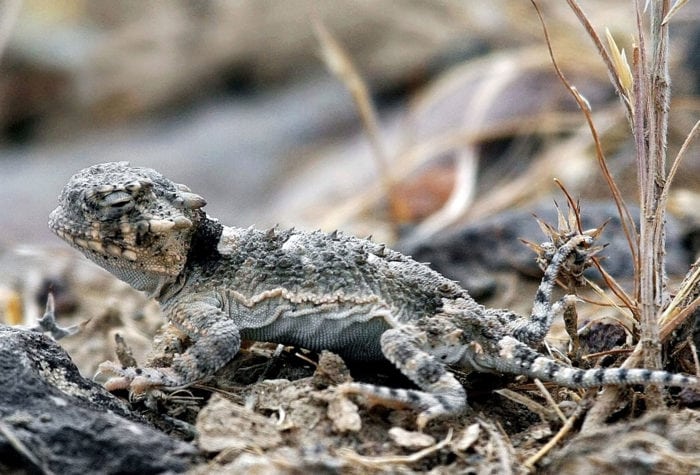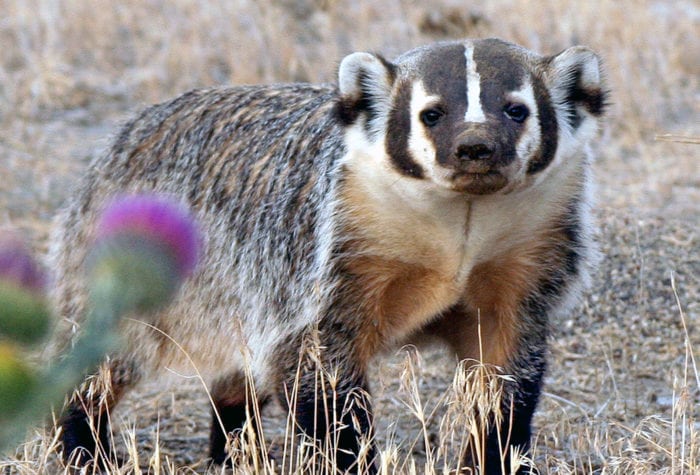Hay Creek Fence Pull
Organizer: Jefferson Jacobs
Dates: October 12-14, 2022
Region: John Day River Basin
Difficulty Rating: Level 3: Challenging
Maximum Group Size: 10 participants
About the place
This project takes place on the traditional lands of the Tenino people, a band of the Warm Springs tribe, and part of the Confederated Tribes of Warms Springs. The Tenino had winter villages at the mouth of the John Day River, and followed a seasonal round to gather resources throughout the year, including visiting Cottonwood Canyon in spring for root gathering and fall for hunting and late-season gathering. The area is also part of the traditional lands of the Cayuse, one of the Confederated Tribes of the Umatilla Indian Reservation, who visited the area seasonally.
After Euro-American settlement, the area of Cottonwood Canyon State Park was ranched by the Murtha and Burres families before being sold to Oregon State Parks and becoming one of Oregon’s newest state parks in 2013. This 8,000-acre park exemplifies the rugged beauty of the John Day River territory with remarkable canyons, tall plateaus and sweeping sage-covered views. Cottonwood Canyon is home to populations of bighorn sheep, pronghorn antelope and elk, and the John Day River running through it is home to chinook, steelhead and other species of native trout.
View the map.
About the stewardship work
Taking apart barbed wire fence is scratchy, dusty, and incredibly satisfying work. We will use hand-tools to remove clips holding barbed wire to posts, roll up barbed wire, and pull metal fence posts. There is ample opportunity to choose specific tasks that match your fitness level and interest, and to switch tasks throughout the day. We take frequent breaks and encourage folks to work at a sustainable pace. No experience is necessary, we can teach all you need to know. It is a wonderful feeling after a day’s work to look back and see a landscape restored and fence-free.
The fence pull will take place along Hay Creek, a steelhead-rearing tributary of the John Day. We will be pulling old barbed wire fence to improve wildlife habitat and removing riparian exclosure fences. ONDA has been working to restore Hay Creek since 2018. Beaver trapping, historic overgrazing, cycles of flood and drought, and wildfires resulted in a creek eroded down to 20 feet below its surrounding floodplains, without native plant diversity or shade. ONDA’s four-year Hay Creek restoration project involved protecting existing vegetation from browse, building beaver dam analogs (BDAs) to provide irrigation to dry floodplains to make them suitable for planting, and installing a large number of diverse, native riparian plant species. By giving beaver the food and materials they need, they will be able to do the real restoration work in Hay Creek. The result will be a creek resilient to the impacts of climate change and able to support healthy populations of a wide variety of native flora and fauna.
Trip timeline
- Wednesday, October 12, 5 p.m.: We will meet at the Cottonwood Canyon Campground. After dinner, we’ll have time to talk more in-depth about the coming days’ work and its significance in the bigger picture.
- Thursday-Friday, October 13-14: After breakfast, we’ll carpool and caravan the 25 minutes or so to the worksite in Hay Creek. We’ll be away from camp all day, but head back around 3:30 to have time to relax and explore in the afternoons after work. We will end the work in time to let people get on the road Friday night if the want or they can stay until Saturday morning.
Camp
We will be camping in the luxurious Cottonwood Canyon State Park Campground. There is potable water onsite, as well as bathrooms, showers and kitchen shelters.
Difficulty
This trip has a wide variety of work, so there is ample opportunity for finding a job that fits with your abilities. The work will require walking on fairly level, but uneven ground, dexterity to use hand tools, and ability to lift light loads. The riparian fence removal will require hiking down a short, steep slope. Everyone can pace themselves, regulate their own level of effort, switch between various available tasks and rest as needed.
Participant responsibilities
Participants are responsible for their own food and camping gear as well as transportation to and from the trip. Sturdy boots, long pants, a long sleeve shirt, leather gloves, and eye protection are required for this trip (sunglasses or prescription eyeglasses are suitable eye protection). Participants should be prepared to be away from camp all day and bring a daypack for lunch, snacks and water.
Gear provided
ONDA will provide tools for the work, water during the work day, extra gloves and glasses, some group camping equipment like tables and a canopy, and expert leadership.
Registration
An ONDA registration application and medical form are required for this trip. Check the box next to each trip you would like to attend.
Apply Now
You will receive a confirmation email within 2 weeks of submitting your form. The confirmation email will provide information regarding which trips you are on the “participant list” for, and which trips are full, and therefore you have been placed on the “wait list.”
Six weeks before the start of the trip, the trip leader will send out an RSVP to make sure everyone is still able to participate. Based on RSVPs, open spaces will be backfilled with people from the waitlist.
Three weeks before the trip start date, registered and confirmed participants will receive driving instructions, maps, and additional information in an email sent by the trip leader
If you have any questions in the meantime, please don’t hesitate to contact the trip leader.
Your trip leader
This trip will be led by Jefferson Jacobs, ONDA's Riparian Restoration Coordinator. For questions about the trip you can contact him by email jjacobs@onda.org.
Meet JeffersonONDA's Restoration and Stewardship Work
Over the last two decades, ONDA has engaged volunteers in projects to plant thousands of trees, restore dozens of miles of streams, decommission old roads, and remove enough barbed wire […]
Read More
